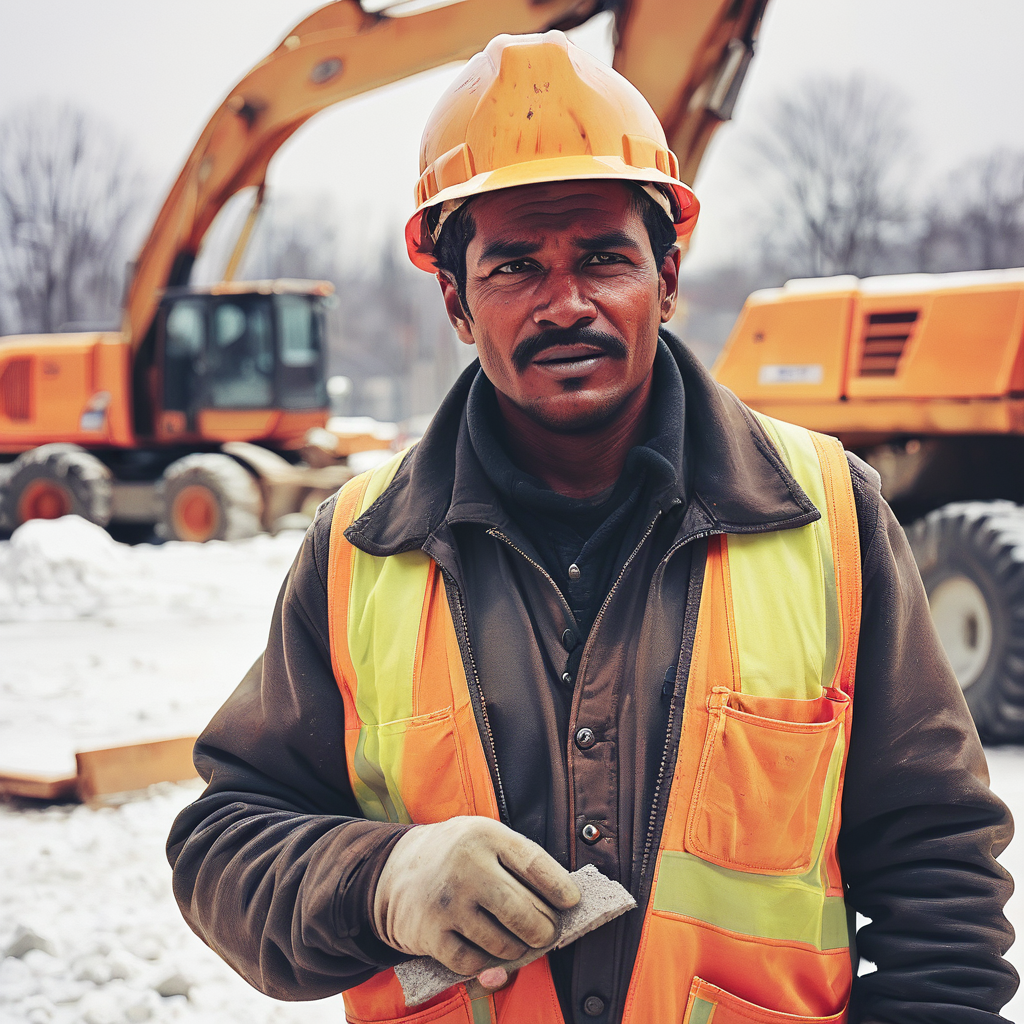
Winter presents unique challenges for the construction industry, with cold temperatures, icy conditions, and reduced daylight hours posing significant safety risks for workers. However, with proper planning, training, and adherence to safety protocols, construction sites can operate safely and efficiently throughout the winter season. Here’s a comprehensive guide to navigating construction safety during winter:
1. Conduct a Winter-Specific Risk Assessment:
Before starting any winter construction activities, conduct a thorough risk assessment specific to the season. Identify potential hazards such as slippery surfaces due to ice or snow, reduced visibility in fog or snowstorms, and cold-related illnesses like hypothermia and frostbite. Develop mitigation strategies and incorporate them into your safety plan.
2. Ensure Proper Training and Education:
Provide comprehensive training for all workers on winter-specific hazards and safety protocols. Emphasize the importance of dressing in layers to stay warm, recognizing signs of cold stress, and using proper techniques for lifting and handling materials in cold conditions. Educate workers on the correct use of personal protective equipment (PPE), including insulated clothing, waterproof boots, gloves, and headgear.
3. Monitor Weather Conditions and Adjust Schedules:
Stay informed about weather forecasts and monitor changing conditions throughout the day. Adjust work schedules accordingly to avoid the coldest periods or adverse weather conditions. Schedule outdoor work during daylight hours when visibility is best and temperatures are relatively warmer. Have contingency plans in place for sudden weather changes or emergencies.
4. Maintain Safe Walking and Working Surfaces:
Keep walking and working surfaces clear of snow, ice, and slush to prevent slips, trips, and falls. Use snow removal equipment such as snow blowers, shovels, and ice melt products to maintain safe pathways and access points. Install anti-slip mats or traction aids on walkways and scaffoldings to provide better footing for workers.
5. Implement Proper Heating and Ventilation:
Provide heated shelters or warming areas where workers can take breaks and warm up during cold weather. Ensure these areas are well-ventilated to prevent buildup of carbon monoxide and other harmful gases from heating equipment. Portable heaters should be used with caution and placed in well-ventilated areas away from combustible materials.
6. Inspect and Maintain Equipment:
Regularly inspect and maintain construction equipment to ensure they are in proper working condition for winter use. Check for cold-related issues such as frozen fuel lines, batteries, and hydraulic systems. Keep equipment manuals readily available for troubleshooting and operating instructions specific to cold weather conditions.
7. Promote Hydration and Nutrition:
Encourage workers to stay hydrated throughout the day, even in cold weather when thirst may not be as apparent. Provide warm beverages such as tea or soup to help maintain body temperature and hydration levels. Ensure workers have access to nutritious meals and snacks to sustain energy levels during physically demanding tasks.
8. Monitor Worker Health and Wellbeing:
Monitor workers for signs of cold stress, including shivering, numbness, confusion, and pale or blistered skin. Encourage workers to notify supervisors if they experience any symptoms of cold-related illnesses or injuries. Implement a buddy system to monitor each other’s wellbeing and provide assistance as needed.
9. Communicate and Update Safety Procedures:
Maintain open communication channels with workers, supervisors, and subcontractors regarding safety procedures and updates related to winter conditions. Conduct regular safety meetings to reinforce safety protocols, address concerns, and share best practices for working safely in cold weather. Encourage workers to actively participate in identifying and mitigating hazards on-site.
10. Prepare for Emergencies:
Be prepared for emergencies such as slips and falls, cold-related illnesses, or accidents involving equipment. Ensure all workers are trained in emergency response procedures and know the location of emergency exits, first aid kits, and communication devices. Have emergency contacts readily available and posted in visible areas on-site.
By prioritizing safety, planning ahead, and implementing these practices, construction sites can effectively manage the challenges of winter weather conditions. Ensuring the wellbeing of workers not only enhances productivity but also reinforces a commitment to creating a safe and supportive work environment throughout the winter construction season.
Cedar Hill St. Louis Jefferson County Olivette Kirkwood Ballwin Arnold Franklin County St Charles County Fenton High Ridge Dittmer Creve Coeur
